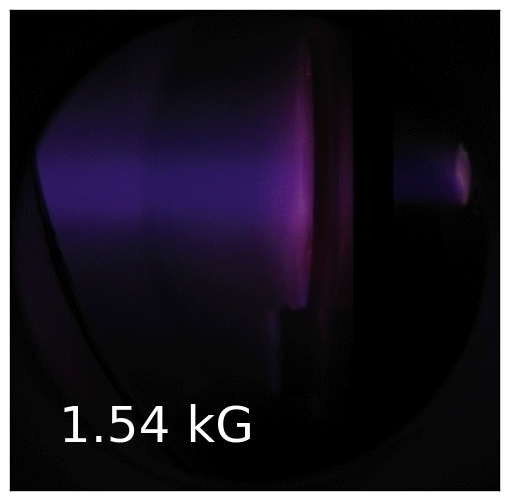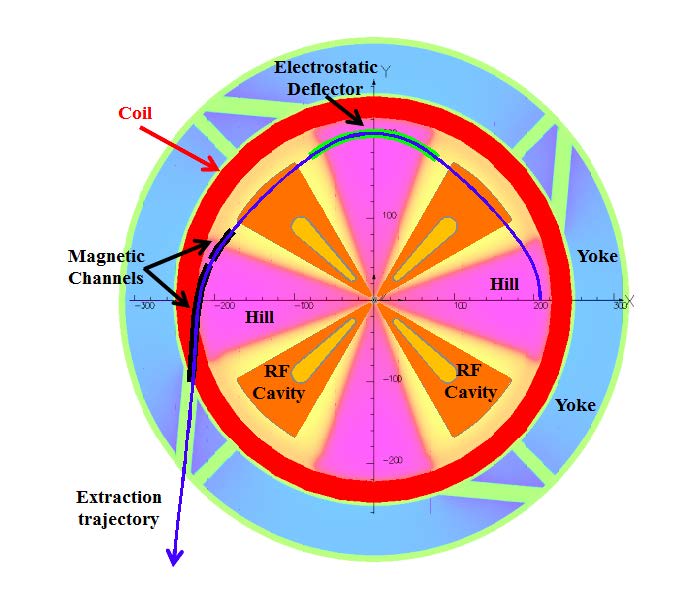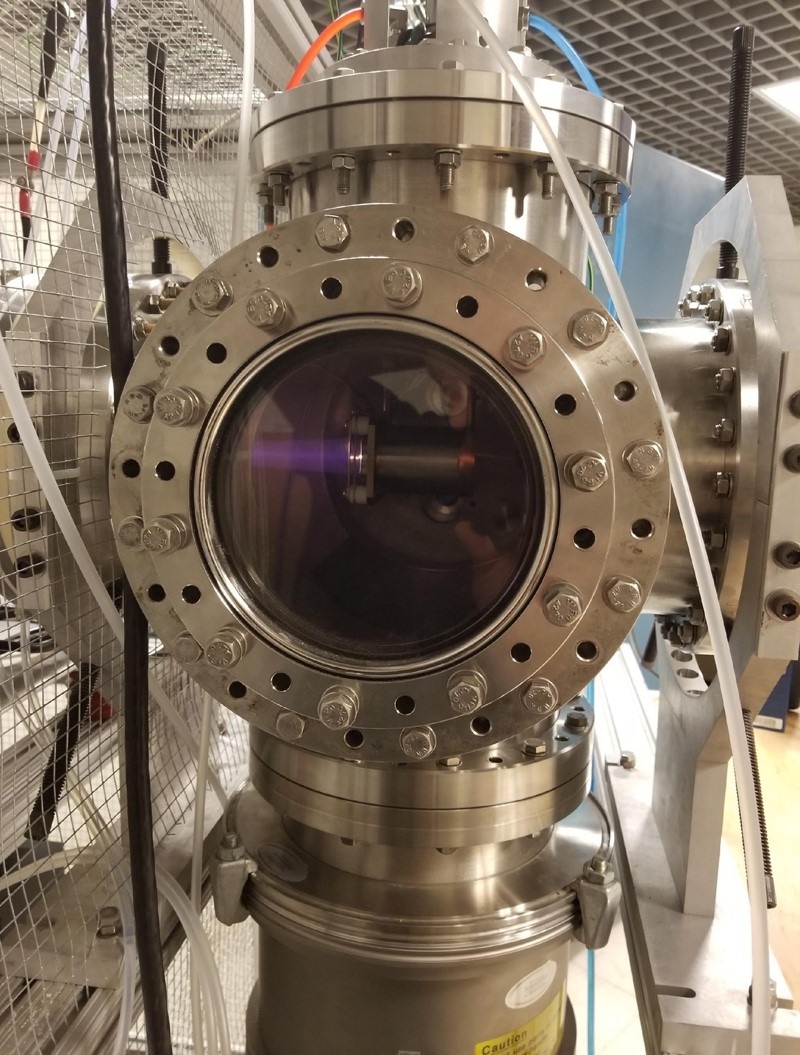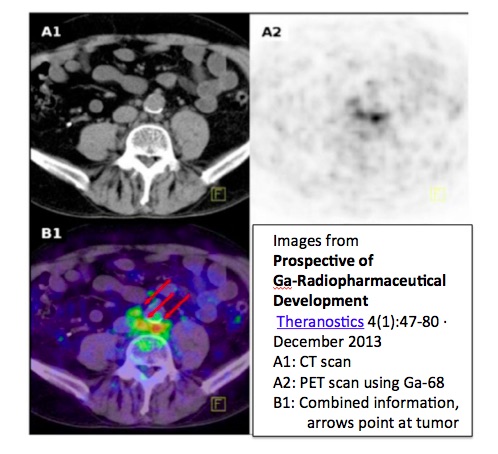
IsoDAR, an isotope decay-at-rest experiment, will form the first stage of the phased DAEδALUS (Decay-At-rest Experiment for δcp studies At the Laboratory for Underground Science) experiment that will ultimately search for evidence of CP violation in the neutrino sector. Utilizing the injector cyclotron setup being devised for DAEdALUS, IsoDAR will be paired with a ~1 kton scintillator-based detector and used to search for physics beyond the standard model. These searches will focus around three areas. First, IsoDAR will produce an electron antineutrino flux of sufficient intensity to form a conclusive test of sterile neutrino oscillation models using the L/E dependence of inverse beta decay events. Secondly, the number of electron antineutrino-electron scatter events will be an order of magnitude greater than any previous experiment, enabling purely leptonic precision tests of the standard model to be made. Finally, IsoDAR will also permit searches for the production and decay of exotic particles in the detector, allowing for further investigation of physics beyond the standard model.

In brief, the design consists of an ion source which sends 5 mA of H2+ into a high-power compact cyclotron. These ions are accelerated to energies of 60 MeV/amu before being dissociated into their proton constituents as they leave the accelerator. As H2+ consists of two protons and one electron, the dissociated beam will deliver 10mA of protons onto a 9Be target immersed in D20, producing a high neutron flux. These neutrons will then enter a sleeve surrounding the target, which is made from 99.99% pure 7Li. The interactions here will create radioactive isotopes, including large quantities of 8Li, which will then beta decay producing the electron antineutrinos required for our experiment. If sterile neutrinos exist then we could see the oscillation spectrum shown below. Several sites are being considered for this experiment, among them KamLAND, in the Kamioka mine in Japan. Our newly completed Conceptual Design Report for the Technical Facility at KamLAND is available here.

The purpose of this experiment is to search for sterile neutrinos. The simplest extension of the Standard Model consistent with the oscillation observations to date calls for three neutrino mass states, which are each mixtures of the three known neutrino flavors. However, a number of experiments seem to hint that there are more oscillation frequencies beyond those which can be explained in this three-neutrino picture. A solution that might explain these anomalous data sets adds an extra neutrino to the theory. This sterile or non-interacting neutrino allows for additional mass states that can lead to higher frequency oscillations. If these oscillations occur, then on IsoDAR we will see the striking wave-like signal, above. To learn more about sterile neutrino phenomenology, click here.

Our present work focuses on development of ion source, low energy beam transport, and spiral inflection for the cyclotrons. Most beam losses occur immediately after injection, in the central region of the cyclotron. Therefore, we must show that we can inject a 5 mA beam of H2+ successfully. To this end, we performed a demonstration at Best Cyclotron Systems Incorporated. The beam at the Best Teststand can be seen in the movie at the top of the page. One can see the protons and the H2+ focusing sequentially as the current to a solenoid magnet is changed. You can read about our results here . We learned a lot from that study. We have now constructed a state-of-the-art H2+ called the MIST-1 at MIT, which is shown above. This work has been supported by NSF and the Bose Foundation
We are also designing, and soon will construct, a radio frequency quadrupole for axial injection into the IsoDAR Compact cyclotron. This novel approach to injecting beam will allow us to capture and accelerate the H2+ efficiently. This work is supported by NSF and the Heising-Simons Foundation. We have submitted a new paper on this to Nuclear Instruments and Methods:
- "High Intensity Cyclotrons for Neutrino Physics," arXiv:1807.03759.

Recently, we have realized that the IsoDAR cyclotron can be used to produce important isotopes for medical imaging and treatment. We are especially interested in producing Ga-68 for PET imaging and Ac-225 for treatment. Ga-68 is delivered to hospitals in the form of its parent isotope, Ge-68, which has a half life of 270 days. IsoDAR, as a dedicated isotope machine, can supply more than 500 Ga-Ge generators per week. At present, Ra-226 targets are used with low-energy cyclotrons to produce Ac-225. These are extremely difficult to make and handle. Our cyclotron, which runs at high energy, can produce this isotope using natural thorium. We can supply 20 doses per hour for the dedicated isotope machine. These are enormous rates compared to present production of both Ge-68 and Ac-225. We recently submitted a paper on this to the arXiv, that we will soon submit to a journal:
- "Isotope Production from the IsoDAR Cyclotron," arXiv:1807.06627.
Further Reading
- Small Accelerators for Big Questions from physics@mit
- Proposal for an Electron Antineutrino Disappearance Search Using High-Rate 8Li Production and Decay arXiv and also chosen as a PRL highlight
For more description and for many more papers on IsoDAR, please see our IsoDAR/DAEδALUS Collaboration page